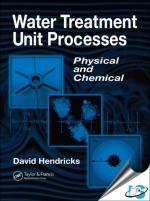Tab Article
The unit process approach, common in the field of chemical engineering, was introduced about 1962 to the field of environmental engineering. An understanding of unit processes is the foundation for continued learning and for designing treatment systems. The time is ripe for a new textbook that delineates the role of unit process principles in environmental engineering. Suitable for a two-semester course, Water Treatment Unit Processes: Physical and Chemical provides the grounding in the underlying principles of each unit process that students need in order to link theory to practice.
Bridging the gap between scientific principles and engineering practice, the book covers approaches that are common to all unit processes as well as principles that characterize each unit process. Integrating theory into algorithms for practice, Professor Hendricks emphasizes the fundamentals, using simple explanations and avoiding models that are too complex mathematically, allowing students to assimilate principles without getting sidelined by excess calculations. Applications of unit processes principles are illustrated by example problems in each chapter. Student problems are provided at the end of each chapter; the solutions manual can be downloaded from the CRC Press Web site. Excel spreadsheets are integrated into the text as tables designated by a "CD" prefix. Certain spreadsheets illustrate the idea of "scenarios" that emphasize the idea that design solutions depend upon assumptions and the interactions between design variables. The spreadsheets can be downloaded from the CRC web site.
The book has been designed so that each unit process topic is self-contained, with sidebars and examples throughout the text. Each chapter has subheadings, so that students can scan the pages and identify important topics with little effort. Problems, references, and a glossary are found at the end of each chapter. Most chapters contain downloadable Excel spreadsheets integrated into the text and appendices with additional information. Appendices at the end of the book provide useful reference material on various topics that support the text. This design allows students at different levels to easily navigate through the book and professors to assign pertinent sections in the order they prefer. The book gives your students an understanding of the broader aspects of one of the core areas of the environmental engineering curriculum and knowledge important for the design of treatment systems.


